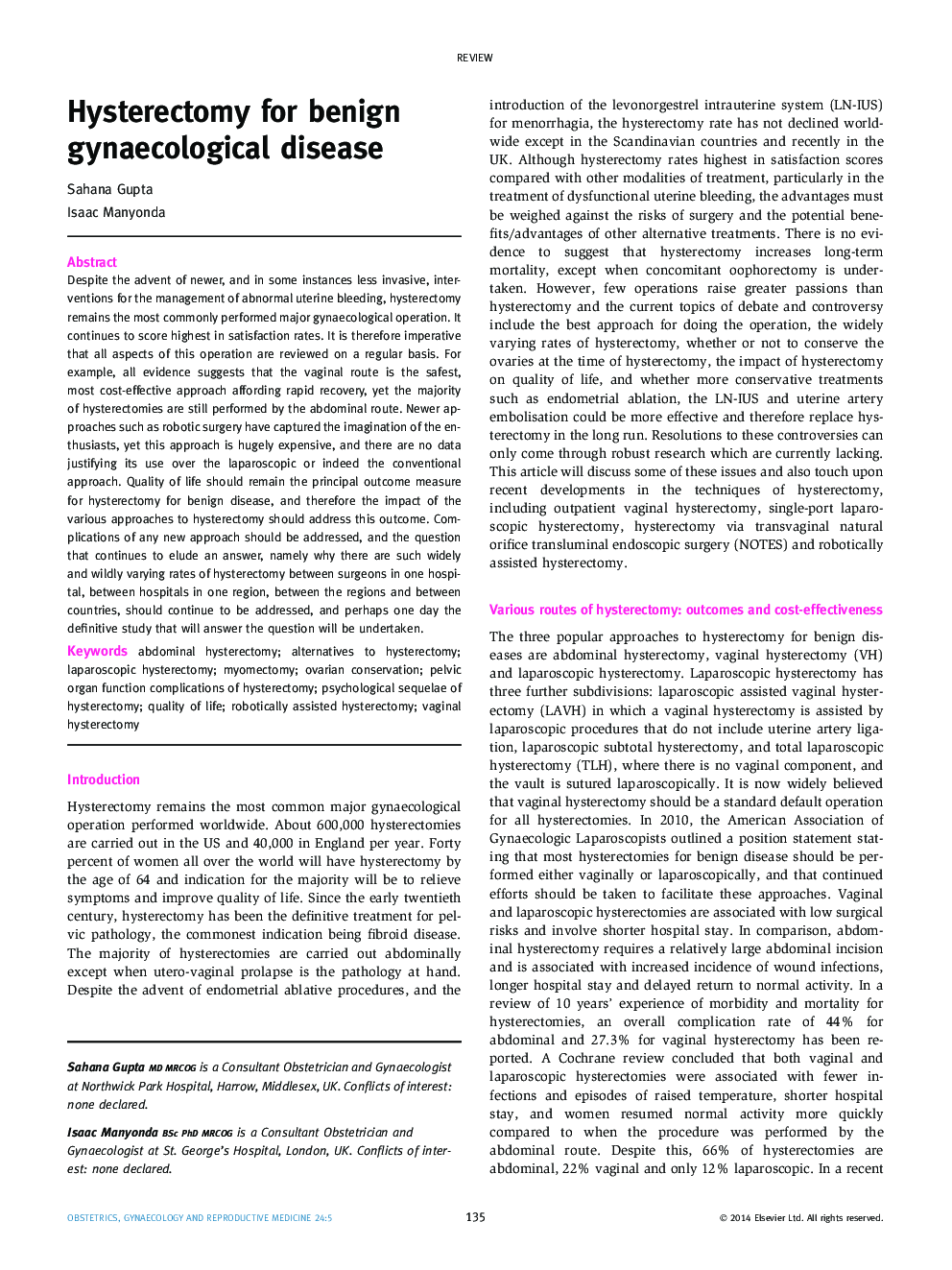| Article ID | Journal | Published Year | Pages | File Type |
|---|---|---|---|---|
| 3966761 | Obstetrics, Gynaecology & Reproductive Medicine | 2014 | 6 Pages |
Despite the advent of newer, and in some instances less invasive, interventions for the management of abnormal uterine bleeding, hysterectomy remains the most commonly performed major gynaecological operation. It continues to score highest in satisfaction rates. It is therefore imperative that all aspects of this operation are reviewed on a regular basis. For example, all evidence suggests that the vaginal route is the safest, most cost-effective approach affording rapid recovery, yet the majority of hysterectomies are still performed by the abdominal route. Newer approaches such as robotic surgery have captured the imagination of the enthusiasts, yet this approach is hugely expensive, and there are no data justifying its use over the laparoscopic or indeed the conventional approach. Quality of life should remain the principal outcome measure for hysterectomy for benign disease, and therefore the impact of the various approaches to hysterectomy should address this outcome. Complications of any new approach should be addressed, and the question that continues to elude an answer, namely why there are such widely and wildly varying rates of hysterectomy between surgeons in one hospital, between hospitals in one region, between the regions and between countries, should continue to be addressed, and perhaps one day the definitive study that will answer the question will be undertaken.
